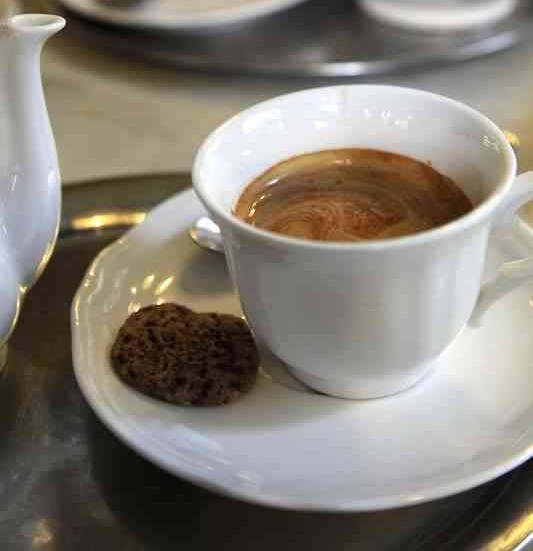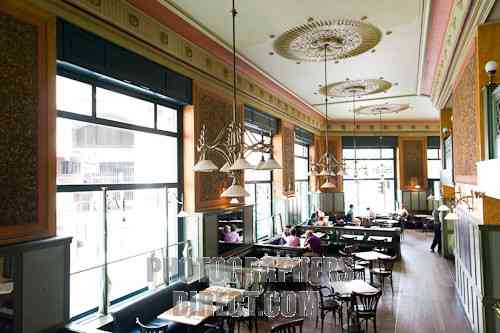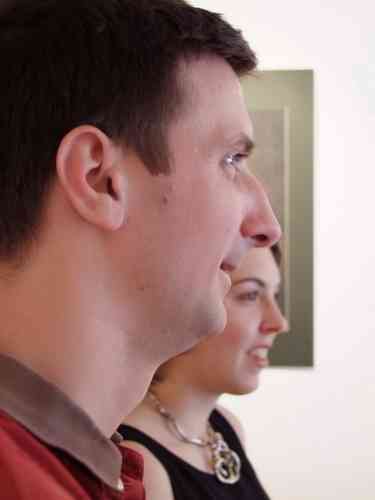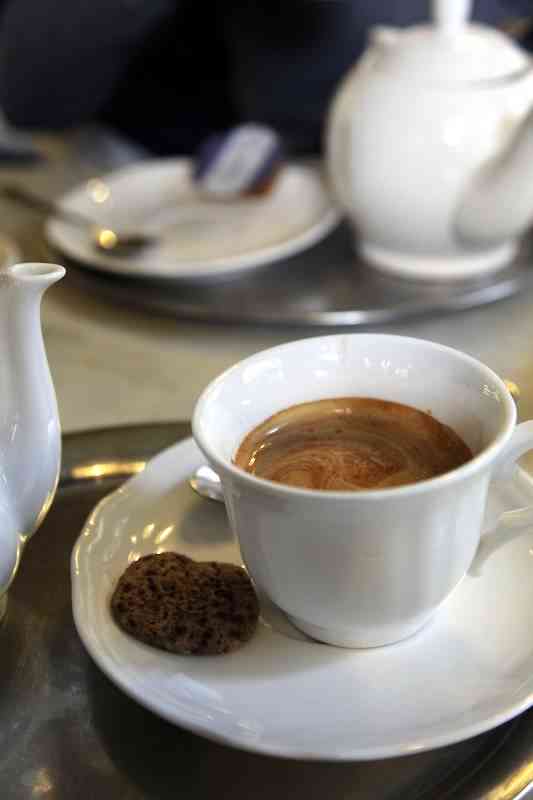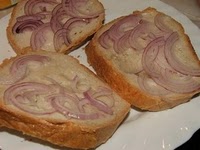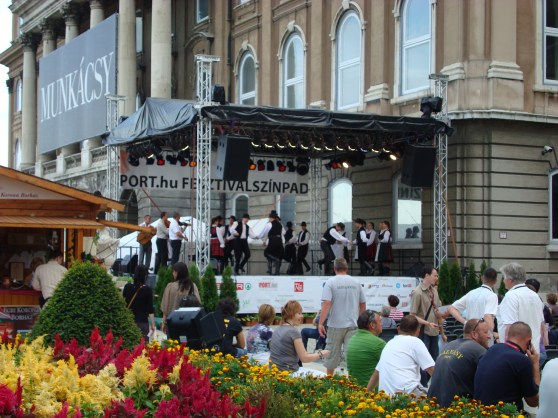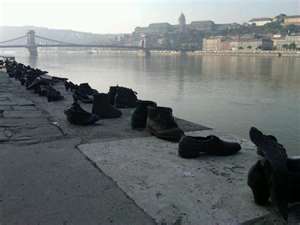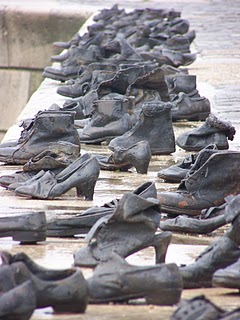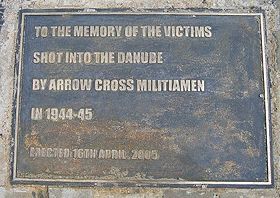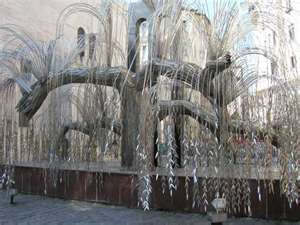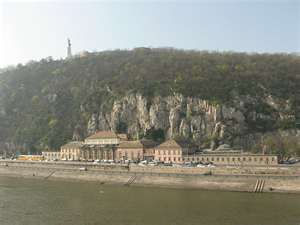
Rudas Baths
Hungary is one of the few countries in the world with an excess of water resources. Having been invaded and occupied many times throughout the centuries, each group of conquerers added something unique to the culture of Hungary. The Turks brought their tradition of baths and the natural mineral waters here went hand in hand.

Main Thermal Bath - Rudas, Budapest
The city is dotted with bath houses, many of them along the Danu (Danube) where there is a natural thermal fault. Built by the Turks in 1550, the Rudas (pronounced Rudash) Baths are quite famous. I recommend going but warn that it may be a bit complicated as the culture of service isn’t as helpful as one might imagine and very little English is spoken at this facility. It took me a bit to figure things out and then I had to help three different women as I was leaving.
The baths contain a thermal pool area and a larger, more traditional pool. I went on ladies day and used the thermal pool (traditional pool is open on the weekend for both sexes). The thermal baths themselves are beautiful, with one large pool in the center situated under an arched dome sparkling in the dim light with colored glass and beautiful mosaic tiles. The saunas (wet and dry options) are sublime and by the time I got out of them (I couldn’t handle more than a couple of minutes) I was like a rag doll, utterly relaxed. There are also five smaller pools of varying temperatures, from very cold to very hot. As usual, I found it most effective to go from very hot to very cold, which relaxes the major muscles in a way nothing else does.
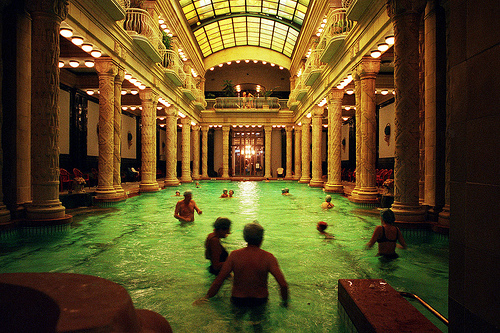
Rudas Pool - On Coed Days
If you decide to go, here’s a tourists guide:-
WHEN TO GO:
– Tuesday is ladies day while weekends are mixed and the remainder of days are reserved for men, in the tradition of Turkish baths.
TO GET THERE
– It is located below Gellert Hill right by the Danube, close to Elisabeth Bridge (Erzsébet híd), on the Buda side of Budapest.
– Address: Rudas Gyógyfürdő és Uszoda, H-1013 Budapest, Döbrentei tér 9.
Phone number: 0036-1-3561322
– Take the 86 bus along the Buda (west) side of the river, which stops right in front of the building.
– When you hop off the bus, don’t be too alarmed that the exterior and lobby look a little worse for wear, the baths themselves are very clean and architecturally/historically beautiful.
PRICES (200 HUF ~$1)
– Morning swimming pool tickets cost 1350 HUF, all day tickets cost between 1800-2000 HUF.
– Steam room tickets cost between 2100-3000 HUF.
– The night-bath ticket is 3500 HUF
– Massage prices vary from 2900 to 4800 HUF for 20-40 minute treatments.
WHAT TO DO WHEN YOU GET THERE
– Upon entering, ask for thermal bath ticket. They’ll provide you with a plastic device which you will put on like a watch and wear during your entire bath visit.
– Scan the ‘watch’ at the turnstile to get in, and proceed to your right where you will pick up a sheet (to be used as a towel) and a thin apron like cloth. Turn to your left to go into the locker room and scan your watch at the white device on the wall (you may have to hold it there for a few seconds). The machine will flash a number, this is the dressing room that has been assigned to you.
– Find the dressing room with the number and scan your watch again to open the door. You can disrobe in the dressing room and leave your things here, it will lock as you close the door again. To get back in your dressing room, simply scan your watch at the door.
HINTS AND NOTES
– On single sex days, go nude….when in Rome after all! For my fellow American women, there is no need to be shy, there will be bathing beauties yes, but many more will be women whose breasts have long been laying atop of their rounded bellies. There is nothing to be shy about!
– You can, of course, wear your bathing suit, but there is no need. Do wear your flip flops, though, and bring your sheet along as well as the small apron like sheet (which I found useful to sit on in the sauna as it protected my girlie bits!).
– I think it is best to visit in the afternoon as you’ll likely leave quite wet. Their hairdryers may be okay for very short hair but after two full cycles, mine was still dripping.
– Also bring water with you as you’ll need to hydrate often. If you don’t bring it, buy it before entering the dressing room (in the entry hall) as you cannot reenter later.
– Finally, be prepared for a bit of a mineral smell. This is what makes the waters so therapeutic so don’t be alarmed.
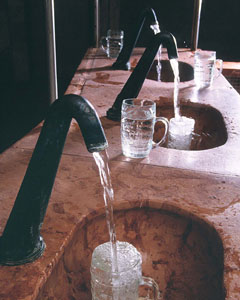
Drinking Waters
Relax, enjoy, and soak in this extraordinary bit of Hungarian culture. It’s unlike any other experience I’ve ever had and well worth it!
**Note, I had to borrow pix off the web, it would have been terribly uncouth to take pictures whilst ladies were bathing au natural!
http://www.rudasbaths.com/

Rudas Thermal Baths
